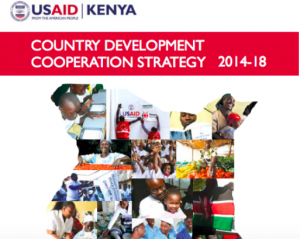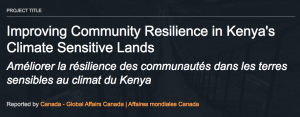International Women’s Day – Where’s the Development Data?
For the last few months at Publish What You Fund, we’ve been looking into the need, availability and transparency of gender data in international development, and we thought there couldn’t be a better time to share some of our findings than International Women’s Day.
What information do we need?
When asking basic questions – which donors are supporting gender equality, how and where? – the OECD-DAC or the International Aid Transparency Initiative (IATI) might be the most obvious places to look for answers. However, as we highlighted in our last blog about gender data, despite solid progress, it is still challenging to track how much aid spending is going towards enhancing gender equality. Strategic and programmatic level data is even harder to find. This gap in information is critical. It is hard to imagine how we will achieve the SDGs by 2030 if we cannot properly assess needs, monitor progress or understand the impact of our development work.
Why do we need this data? Our earlier research showed that more detailed, disaggregated information is crucial to understanding how development programmes are affecting people on the ground. It’s not enough to simply know that a programme has a gender equality component, or to quantify the number of women and men participating in a programme. Much more robust data is needed.
There are a variety of possible reasons for people to need this kind of data. These include more accurately tracking progress to meet SDG 5 (gender equality), using data to enhance coordination and prevent duplication of efforts, and giving people and organisations on the ground significantly better information as to how gender inequality is being tackled in their communities. One organisation we spoke with for our research, for example, referenced how they became aware of a “nearly identical” women’s economic empowerment project in the same area of Burkina Faso only at a very late stage and had to make significant efforts to redesign their project at short notice as a result. Had they had access to timely gender data, this problem may have been entirely avoided.
What information is already available?
On IATI
One place you may look for information on financial and programmatic data is IATI. Locating the gender and development strategies of a particular recipient country is fairly simple. It is possible, for example, to view donor strategies. Many of these are accessible on IATI and can be viewed using Publish What You Fund’s tool, IATI Decipher. USAID, for example, has publicly available Country Development Cooperation Strategies, which can contain a gender strategy component. The CDCSs can provide useful information about the forward-looking development strategies guiding USAID in a particular country. Their strategy for Kenya, for example, has multiple mentions of gender. However, it does not contain detailed information, nor does it – or those of other donors – provide much in the way of understanding how these strategies match those of the Kenyan Government.

At the project level, we can look at IATI information to see which projects have the gender policy marker (a tool that allows donors to tag a project which targets a particular sector, such as gender inequality, or climate change – see our last blog for more information). In Kenya, for example, we can find out how many current projects funded by the Government of Canada include a gender component, in this case it is 24 out of 31 active projects.
Canada is ahead of the curve in terms of both project descriptions and using the gender policy markers. For example, one of Canada’s activities, ‘Improving Resilience in Kenya’s Climate Sensitive Lands,’ is tagged as having gender equality as a ‘significant’ objective. This allows us to further investigate the role of this project in enhancing gender equality. Helpfully, Canada has published an informative description, which gives us a good idea of what the project does. It states that ‘this project aims to strengthen the resilience of about 700,000 people living on the most ecologically fragile lands in Kenya, particularly the most vulnerable women and young people,’ and included among the expected results for this project, it states: ‘enhanced livelihoods and vulnerable communities’ resilience to shocks, particularly women and youth living in Kenya’s drought-prone, climate sensitive lands’.

This activity description, while helpful, isn’t sufficiently detailed to get a proper understanding of the specific activities undertaken to combat gender inequality. However, donors can share more detailed information through linking to project-related documents on IATI. Such documents, for example, might contain anything from specific problems caused to Kenyan women by climate change, through activities that this project will undertake to remedy the various issues identified, to projected or mid-term results information disaggregated by gender. IATI has the potential to share all of this information, but donors need to ensure that it is published in the first place.
At the country-level
Another source of information is the partner country. Kenya has a Ministry of Public Service, Youth and Gender Affairs. On this website, it is possible to find gender priorities for the Government, such as anti-FGM strategies or economic development strategies. This information can be very useful in comparing the gender priorities of the recipient country, to those of the donor organisation. However, this information may not always be so readily available in other countries.
Other resources provided by aid-recipient countries can vary. Ideally there will an Aid Information Management System (AIMS) which provides information on development funding being received by the country. Kenya’s AIMS system, e-Promise, contains detailed financial information. With this system, we can track donors’ funding flows into Kenya, but we are again stalled when trying to find more detailed information on the projects, or the possible gender equality components they contain.
Looking to the future
More detailed, disaggregated information is crucial in order to understand how these development programmes are impacting people on the ground. It’s not enough to simply say that a programme has a gender equality component, or to just provide the number of women and men participating in this programme. A good start would be for donor organisations to make public through channels they already use, such as IATI, more granular gender disaggregated data, such as baseline surveys, targets or results. Additionally, more specific information about project activities which combat gender inequality will go a long way in clarifying the impact of development work on gender inequality. This is information most organisations already collect, all that has to be done is to make a more concerted effort at sharing this information through channels like IATI. If we are to be better equipped to meet the SDGs by 2030, it is crucial that we have detailed, disaggregated, good quality data about the funding flows, and the project objectives, activities and results themselves. We also need to know about the impact they are having on the people they seek to serve.

